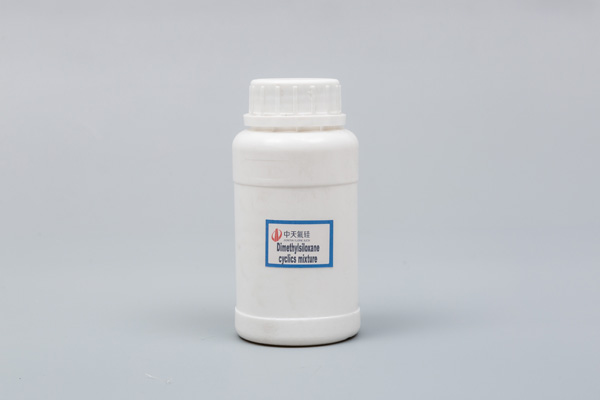Silane Coupling Agents

उत्पाद विवरण
Silane coupling agent, also known as silane treatment agent and primer, is a kind of low molecular organic silicon compound with special structure. The speciality of silane coupling agent lies in the two types of reactive groups with different chemical properties contained in it. One of the reactive group can react with organic materials, and the other is able to form chemical bonds with inorganic materials. Silane coupling agent is also the most widely used coupling agent today.
Zhongtian Silane Coupling Agents Product Series
Zhongtian, a silicone products manufacturer, has its own silane coupling agent product series. If you are looking for high-quality silane coupling agents, we can provide you, an attractive silane coupling agent price, with dimethylcyclosiloxane, hexamethylcyclotrisiloxane, and octamethylcyclotetrasiloxane.
Silane Coupling Agent Application
The silane coupling agent is good at improving the adhesion of organic and inorganic material interfaces and is widely used to enhance the strength and properties of glass fiber reinforced plastics. In recent years, a silane coupling agent is used to the production of inorganic-organic hybrids, such as laminates for printed circuit boards, artificial marble, plastic magnets, and silica immobilized bioactive substances. In addition to their use for improving interfacial adhesion, various applications for silane coupling agents are being developed. For example, they are now used to synthesize cross-linkable polymers using the reactivity of hydrolysis groups and to obtain antistatic and antimicrobial properties through surface treatment. In the near future, silane coupling agents will be employed in a wider range of fields.
Silane Coupling Agent Wiki
The silane coupling agent is prepared by the addition of chloroform and unsaturated olefins with reactive groups under the catalysis of platinum chloric acid, and then alcoholysis. The silane coupling agent can be expressed by the general formula y (CH2) nSiX3, where n = 0 ~ 3; X = hydrolyzable group, y = organic functional group, which can react with resin. X usually includes Cl, ome, OET, oc2h4och3, osime3, and OAC. Because of this special structure, X molecules have reaction groups that can be chemically combined with inorganic materials (such as glass, silica sand, metal, etc.) and with organic materials (such as synthetic resin, etc.) at the same time, and can be used for surface treatment.
Therefore, through the use of silane coupling agent, a "molecular bridge" can be set up between the interface of inorganic and organic materials, and the two materials with different properties can be connected together. This is also why silane coupling agent is used to improve the properties of composite materials and enhance the adhesion strength.
Application of Silane Coupling Agents
The silane coupling agent is good at improving the adhesion of organic and inorganic material interfaces and is widely used to enhance the strength and properties of glass fiber reinforced plastics. In recent years, silane coupling agent has been used in the production of inorganic-organic hybrids, such as laminates for printed circuit boards, artificial marble, plastic magnets, and silica immobilized bioactive substances. In addition to their use for improving interfacial adhesion, various applications for silane coupling agents are being developed. For example, they are now used to synthesize cross-linkable polymers using the reactivity of hydrolysis groups and to obtain antistatic and antimicrobial properties through surface treatment. In the near future, silane coupling agents will be employed in a wider range of fields. A silane coupling agent is used for the following aspects:
1. As a surface treatment agent to improve the adhesion performance of room temperature curing silicone rubber and metal.
2. For inorganic filler filling plastic, which can improve its dispersion and adhesion.

